
The garage, often overlooked, serves as a multifunctional space for most homeowners. From housing cars and tools to functioning as an extended storage or workshop, the importance of its flooring can’t be understated.
With the myriad of choices available in the market today, selecting the ideal flooring for your garage can seem daunting. You may wonder if tiles work better than epoxy or if rubber mats are the right choice. You may be curious about garage tiles’ benefits or rubber flooring’s drawbacks.
This guide seeks to answer all those pressing questions, providing an exhaustive look into the world of garage flooring. Dive in as we explore the most practical and attractive solutions for your garage floor, ensuring it stands the test of time, weight, and those inevitable oil spills.
Why is Garage Flooring Important?
The flooring of your garage plays a pivotal role in determining the aesthetics, safety, and longevity of the space. While many homeowners might initially overlook this aspect, prioritizing walls or storage solutions, the floor bears the brunt of daily activities, from parking vehicles to DIY projects.
What is the Purpose of Garage Floor Tiles?

The right flooring can transform your garage from a mere storage area to a functional and efficient space. Here’s how:
1. Durability: High-quality garage flooring, whether tiles, epoxy, or rubber mats, can handle the weight of cars, jack stands, and heavy tools. This durability ensures the longevity of your floor and reduces maintenance costs in the long run.
2. Flexibility: Modular garage flooring options, like tiles and mats, offer flexibility. If a particular section gets damaged, you don’t have to redo the entire floor—replace the affected pieces.
3. Moisture Resistance: Many garage flooring options are designed to resist moisture, making them ideal for regions with snow or heavy rainfall. This resistance prevents mold growth and reduces the damage from water seepage.
4. Enhanced Utility: A well-laid floor can turn your garage into a multipurpose room. Whether you’re keen on DIY projects, need a workout space, or want an organized area for your car and tools, the right flooring sets the tone for the room’s utility.
By understanding the importance of garage flooring and its multifaceted advantages, homeowners can make informed decisions that enhance their garage space’s safety, beauty, and functionality.

Can You Put Flooring in Garage and What Are the Affordable Options?
When considering a garage upgrade, one of the first things homeowners often contemplate is the budget. Flooring can transform the space, but does it have to come with a hefty price tag? The good news is, with the myriad of choices available today, you can find both aesthetically pleasing and functional options without breaking the bank.
What is the Cheapest Way to Put Flooring in Garage?
Budget and garages don’t necessarily have to be at odds regarding flooring. Here are some cost-effective solutions:
1. Concrete Sealers: A simple sealer can protect it from moisture and minor stains if your existing concrete is in relatively good condition. While it might not offer the visual appeal of other options, it gets the job done at a fraction of the cost.

2. Paint and Epoxy: A step up from sealers, epoxy floors, or concrete paint can be applied directly to the concrete, giving it a glossy, attractive finish. Epoxy is durable and chemical resistant, making it a popular choice for homeowners.
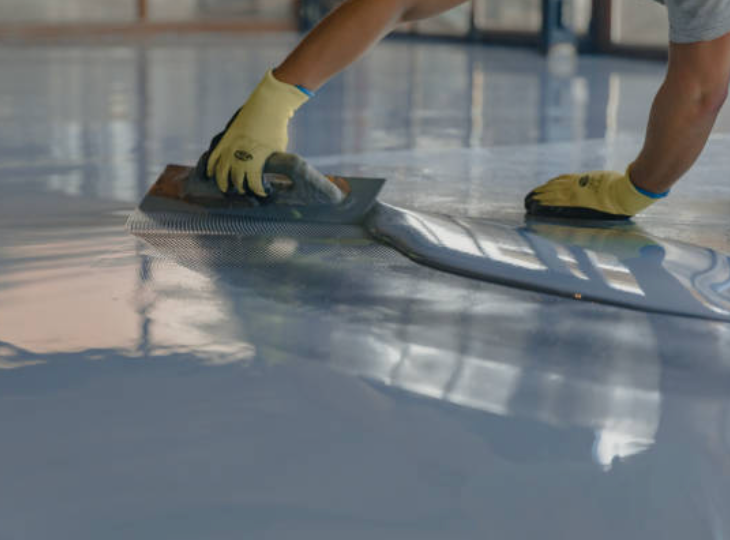
3. Roll-out Vinyl or PVC Flooring: These are akin to mats but cover the entire floor. They’re inexpensive, easy to install, and a barrier against moisture and stains.
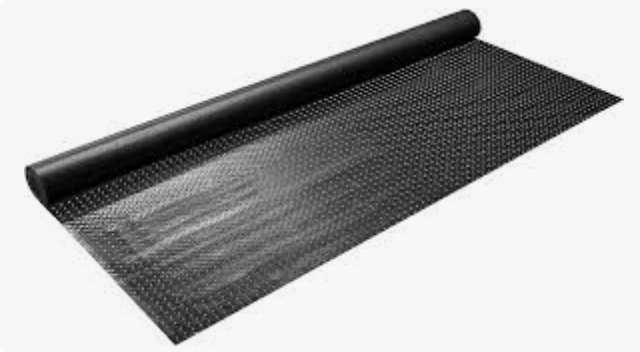
4. Interlocking Plastic Tiles: These are cheaper than their rubber or vinyl counterparts. While they might not offer the same level of durability, they’re easy to install and come in various designs and colors.

Are Garage Floor Mats a Good Idea for Budget-Conscious Homeowners?
Garage floor mats are an excellent choice for homeowners looking for a balance between cost, protection, and aesthetics.
Here’s why:
1. Ease of Installation: Garage floor mats require no adhesive or specialized tools. Roll them out, cut to fit if necessary, and you’re done.
2. Protection: Mats protect against spills, dirt, and debris. Whether it’s oil from your car or moisture from snow-laden boots, these mats can handle it.
3. Durability: Many floor mats, especially those designed for garages, are built to last. They can handle the weight of vehicles and resist wear and tear from foot traffic.
4. Maintenance: Cleaning a garage floor mat is as simple as giving it a quick sweep or wipe. For deeper cleans, hose it down.
5. Cost: Compared to high-end tiles or professional epoxy installations, garage floor mats are considerably more affordable, making them an attractive option for those on a budget.
Opting for garage flooring means maintaining quality and aesthetics. With many affordable options, you can elevate your garage’s functionality and appearance, even on a tight budget.

Is Flooring in Garage the Perfect Solution for Needs?
Many homeowners are torn between splurging and saving when contemplating a garage makeover. After all, most garages serve as more than just a place to park vehicles; they’re multifunctional spaces, workshops, and sometimes even a haven for DIY enthusiasts. Is there a way to revamp the surfaces of your garage without putting a significant dent in your wallet? The answer is a resounding “yes.”
What Are the Most Cost-effective Approaches to Flooring in a Garage?
Transforming the floor of most garages doesn’t have to break the bank. Here are some pocket-friendly solutions:
1. Concrete Enhancers: If the solid foundation of your existing garage floor is in decent shape, consider using concrete sealers. These protect the surface from the elements and provide a light sheen, enhancing the look.
2. Epoxy and Paint: A notch above sealers, epoxy creates a glossy, smooth surface resilient to vehicle grime, oil, and other messes that can stick to and stain the floor. Paint, however, can pull together the overall look of your garage while being easy on the wallet.
3. Roll-out Vinyl or PVC Flooring: Available in different sizes, these can cover the edges and lengths of any garage. This option stands out for its easy installation and ability to resist mud, water, and other debris.
4. Interlocking Plastic Tiles: These lightweight tiles are affordable and come in various designs that can match any aesthetic preference. While they might not be as durable as wood or certain other materials, they are undoubtedly an excellent option for those on a budget.
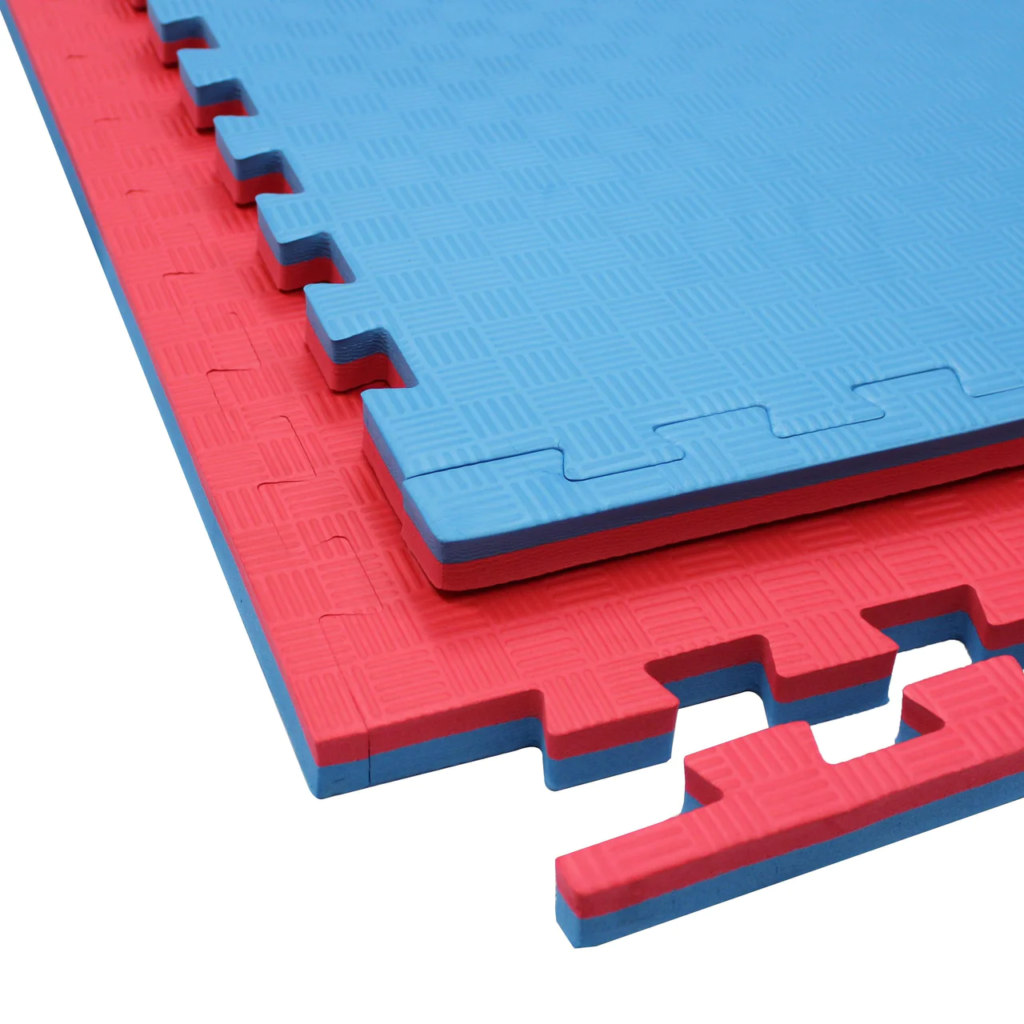
Can Garage Floor Mats Elevate the Look and Functionality of My Garage Without Overspending?
Absolutely. Garage floor mats are a boon for those looking to find a middle ground between cost, aesthetics, and functionality.
Here’s why:
1. Installation Simplicity: Say goodbye to the grueling hours on your knees, fitting tiles or painting edges. These mats roll out, and you can trim them to match your garage’s dimensions.
2. Defense Mechanism: These mats are the frontline defense against dirt, oil spills, and grime. Their protective covering ensures that the messes don’t stick and are easy to clean.
3. Durability with Flexibility: Made to stand the test of time, these mats can handle the weight of heavy vehicles. They won’t easily break, slide, or pull apart, ensuring your car has a solid surface to park on.
4. Maintenance and Sale Value: Cleaning them is a walk in the park, making cleaning your garage floor a breeze. If you ever decide to sell your property, a well-maintained garage can boost its sale value.
5. Affordability: Their cost-effective nature and protective elements make them a favorite for many homeowners.
Incorporating flooring in a garage sometimes equates to a hefty price tag. With the right choices, you can create an attractive, functional space that stands up to daily wear and tear without overspending.

How Do Various Garage Flooring Solutions Perform Over Concrete?
Concrete, by default, is a robust and enduring substrate for garage floors. Still, while it offers unparalleled strength, untreated concrete can succumb to stains, cracks, and general wear over time. Recognizing this, numerous flooring alternatives have been developed to enhance and protect this foundational surface.
What is the Best Flooring to Overlay on Concrete?
Concrete serves as an excellent base, but the key is to find a flooring solution that synergizes with its strengths while addressing its weaknesses:
1. Epoxy Coatings: With its transformative capabilities, epoxy isn’t just a covering but a metamorphic agent. It turns the dull gray of concrete into a gleaming, resilient surface resistant to most garage-related chemical spills.
2. Vinyl Flooring: As a flexible and aesthetic choice, vinyl stands up to most garage challenges and offers a broad palette of designs to suit various tastes.
3. Interlocking Tiles: These functional pieces, made from hard-wearing materials like rubber or vinyl, are about utility and creativity. Beyond their practicality, they allow homeowners to design a floor that reflects their style.
4. Polyaspartic Coatings: Think of polyaspartic as epoxy’s elegant cousin. While it delivers a finish like epoxy, it cures faster and is especially adept at withstanding temperature variations.

Is Installing Rubber Flooring Over Concrete a Viable Option?
Definitely. Rubber flooring over concrete brings a suite of benefits to the table:
1. Endurance: It’s a myth that soft equals weak. Rubber floors, while providing a cushioned surface, are powerhouses against the daily grind of garage activities.
2. Comfort Quotient: Standing on concrete can be taxing, especially during long projects. Rubber offers a reprieve, making extended garage sessions more bearable.
3. Warmth Factor: Concrete can be cold and unforgiving, especially in the winter. The rubber acts as an insulating layer, mitigating the chill.
4. Set Up and Care: Playing rubber flooring is straightforward in tiles or rolls. Ensure the concrete is devoid of moisture or debris, roll or fit the rubber, and voila! Maintenance is equally simple, needing just regular cleaning to keep it in top shape.

Is Tiling a Concrete Garage Floor a Practical Choice?
Yes, with a caveat – the proper preparation and the suitable tiles:
1. Prepping the Base: Concrete needs to be devoid of imperfections before tiling. Cleanliness is a must, and cracks, if any, need addressing.
2. Tile Type: Not all tiles are made equal. For garages, the robustness of porcelain tiles is often favored, ensuring they can bear the load and resist water.
3. Laying Down the Tiles: A concrete-specific mortar is the adhesive of choice here. Once the tiles are set, patience is vital. Let them bond for a day before applying grout.
4. Advantages Galore: Beyond their undeniable aesthetic appeal, tiles offer an easy-to-clean surface impervious to most common garage spills.
Choosing the correct overlay for concrete is crucial. The aim is to retain the strengths of this foundational material while adding aesthetic and functional layers that ensure the garage remains a versatile space for years to come.

Understanding the Popularity of Rubber Flooring in Garages
The evolution of garage flooring has seen various materials rise and fall in popularity. Rubber flooring has consistently held its ground and remains a favorite for many homeowners. But what’s behind this unwavering popularity? Let’s dive deeper into the world of rubber garage flooring.
Are Rubber Mats Good for Garage Floors?
Yes, rubber mats have become synonymous with practical garage flooring, and here’s why:
1. Protection Against Impacts: Dropping tools, spilling liquids, or moving heavy equipment? Rubber mats act as a shield, preventing damage to the concrete floor beneath.
2. Comfort and Insulation: Standing for prolonged periods, especially on hard surfaces, can strain the body. Rubber mats provide cushioning, reducing fatigue and offering thermal insulation against cold concrete.
3. Ease of Installation: Unlike other flooring options, rubber mats can be easily rolled onto a clean garage floor, instantly transforming the space.
4. Maintenance Simplicity: Keeping a garage floor clean can be daunting. However, with rubber mats, most spills and dirt can be quickly wiped or washed away.
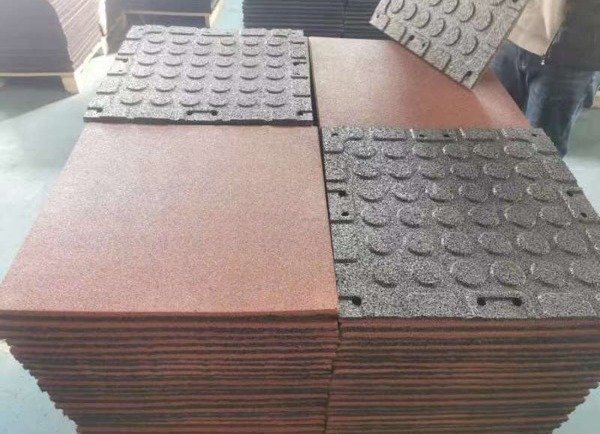
What are the Disadvantages of Rubber Flooring in a Garage?
While rubber flooring boasts numerous benefits, it’s essential to understand its limitations:
1. Sensitivity to Certain Chemicals: Prolonged exposure to petroleum-based products can deteriorate rubber flooring over time.
2. Color Fading: Rubber mats can fade and lose their vibrancy if exposed to direct sunlight for extended periods.
3. Potential Odor: Freshly installed rubber flooring can emit a noticeable smell, which typically dissipates over time but might be off-putting to some individuals.
How Does Rubber Flooring Offer Slip Resistance and Durability?
Rubber’s natural properties make it an outstanding material for garage floors:
1. Grip Underfoot: Rubber’s inherent texture offers excellent traction, reducing the risk of slips, especially when wet. This can be a lifesaver in garages where spills are every day.
2. Resilient Nature: Rubber is naturally elastic, allowing it to bounce back from impacts and resist wear and tear. This resilience ensures a prolonged lifespan, even under the heavy foot and vehicular traffic of a busy garage.
3. Water Resistance: Garages can become damp or encounter moisture, especially during rainy seasons. The rubber acts as a barrier, preventing moisture from seeping through and offering a dry surface to walk or work on.
In conclusion, while rubber flooring in garages is challenging, its benefits have cemented its place as a sought-after option for homeowners globally. Its combination of protection, comfort, and safety makes it hard to overlook when considering garage flooring choices.

Exploring Other Garage Flooring Alternatives
While rubber mats have unique advantages in garage settings, they are not the only option homeowners consider. The garage flooring realm is vast, with many materials and styles to suit various needs and aesthetics. Among the most notable alternatives are containment mats and epoxy coatings.
Are Garage Containment Mats Worth the Investment?
Garage containment mats are specially designed mats that prevent liquids, debris, and other contaminants from spreading. They are instrumental in regions with snowy or rainy climates. Here’s a look into their value proposition:
1. Protection Against Liquids: Designed primarily to contain spills and melting snow from vehicles, these mats prevent potential slip hazards and protect the underlying floor from stains and damage.
2. Easy Cleaning: Instead of sweeping or scrubbing the entire garage floor, homeowners can clean or replace the containment mat as needed.
3. Durability: Made from robust materials, these mats are designed to resist wear and tear, ensuring they remain functional for years.
4. Versatility: They come in various sizes and designs, accommodating everything from compact cars to larger trucks.
While the initial cost may seem substantial, containment mats can be a prudent investment for many homeowners, considering their longevity and protective capabilities.

How Does Epoxy Compare to Tiles and Rubber Mats for Garage Floors?
Epoxy, tiles, and rubber mats each bring a distinct set of attributes to the table:
1. Epoxy Flooring:
– Durability: Epoxy coatings are known for their hard-wearing nature, capable of withstanding heavy traffic and resisting chemical spills.
– Aesthetic Flexibility: Available in various colors and patterns, epoxy can be customized to fit a homeowner’s specific design preferences.
– Seamless Finish: Epoxy offers a smooth, continuous surface, eliminating seams or gaps where dirt and debris might collect.
2. Tiles for Garage Floors:
– Design Flexibility: Tiles allow homeowners to mix and match, creating unique patterns or designs.
– Easy Replacement: Damaged tiles can be individually replaced without overhauling the entire floor.
– Thermal Insulation: Certain tiles, mainly made from vinyl materials, can provide insulation against cold concrete floors.
3. Rubber Mats:
– Shock Absorption: Rubber mats provide cushioning, making standing on for prolonged periods comfortable.
– Slip Resistance: The rubber texture provides excellent traction, reducing slip risks.
– Easy Installation: No need for professionals; homeowners themselves can easily lay out most rubber mats.
When comparing these options, it’s essential to consider the specific needs of the garage, the local climate, budget constraints, and personal aesthetic preferences. Each flooring type has its strengths, and the best choice often depends on the individual circumstances of the garage in question.
In the vast landscape of garage flooring options, understanding the nuances of each alternative helps homeowners make informed decisions that best suit their needs and aspirations.

Tips for Keeping Your Garage Floor Clean and Maintained
A garage floor faces numerous challenges daily – from the weight of vehicles and equipment to exposure to dirt, oil, and various chemicals. Keeping it clean and in prime condition is paramount to ensure longevity and maintain aesthetics. Below are some practical strategies to ensure your garage floor remains as pristine as possible.
How Can You Protect Your Garage Floor from Dirt, Oil, and Debris?
Protection is the first line of defense. By taking proactive measures, you can minimize the amount of cleaning and maintenance required later:
1. Use Floor Mats: Strategically placing mats at entry points can significantly reduce the amount of dirt brought into the garage. Containment mats are beneficial for trapping melted snow, water, and oil drips from vehicles.
2. Seal the Surface: Whether you have a concrete floor, tiles, or epoxy, applying a sealant can make it less porous and more resistant to stains. Bonds also make the surface easier to clean.
3. Regular Sweeping: Make it a habit to sweep the garage floor frequently. This prevents dirt and debris from accumulating and becoming ground on the floor, especially in high-traffic areas.
4. Spill Management: If you notice any spill, whether it’s oil, paint, or any other substance, clean it up immediately. The longer a fall sits, the harder it becomes to remove and the higher the chances of it causing permanent stains.
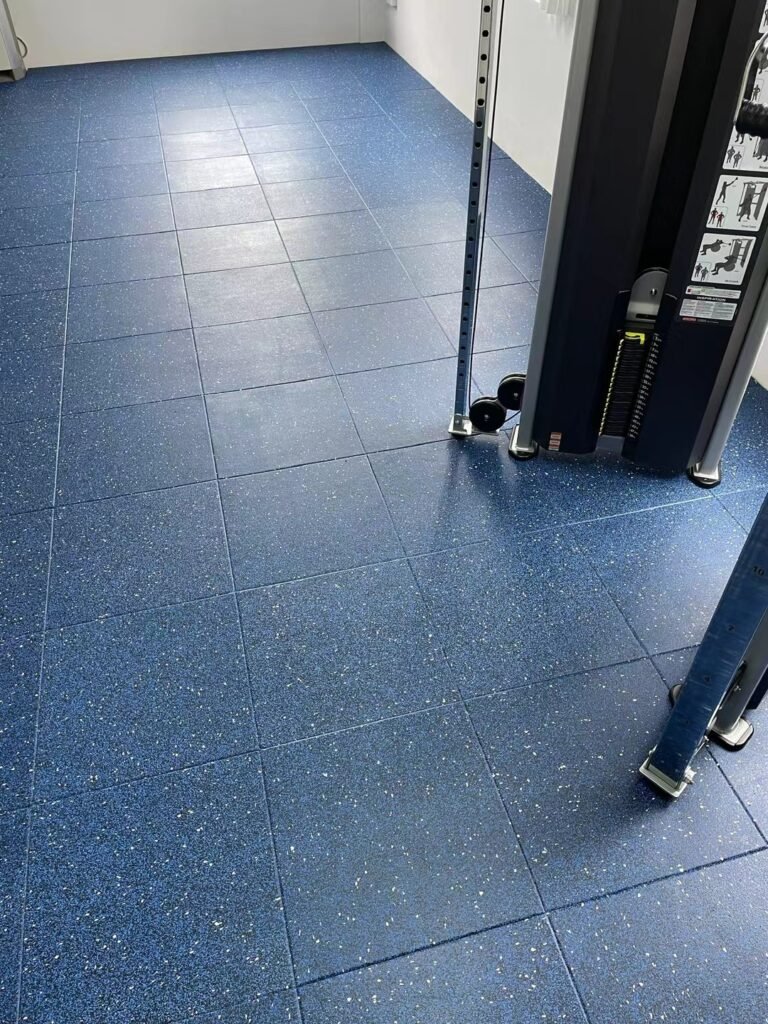
What are Some Efficient Tools and Techniques for Cleaning Garage Floors?
Having the right tools and techniques at your disposal can make the task of cleaning your garage floor less daunting:
1. Degreasers for Oil Stains: These specially formulated solutions can break down and lift oil stains from garage floors. Always follow the manufacturer’s instructions for best results.
2. Power Washers: A power washer can be invaluable for deep cleaning. It can dislodge stubborn dirt and grime, giving your garage floor a fresh look.
3. Soap and Water: Sometimes, a simple solution of soap and water, along with a bit of elbow grease, can work wonders. It’s especially effective for cleaning up fresh spills and removing minor stains.
4. Use Soft Brushes: Instead of stiff bristles, which can leave scratches, use soft-bristled brushes when scrubbing your garage floor. They’re effective yet gentle on the surface.
5. Regular Inspections: Periodically inspect your garage floor for signs of wear and tear, like cracks or chipping. Early detection can lead to quicker repairs and prevent further damage.

In conclusion, while garages are often seen as purely functional spaces, a clean and well-maintained floor can elevate the room’s overall appeal and functionality. Integrating these preventive and cleaning measures into your routine allows you to enjoy a garage floor that stands the test of time.
A garage is more than just a storage space or shelter for vehicles; it’s an extension of our homes and reflects our maintenance habits. By investing in the right flooring option and adopting proactive cleaning and protective measures, homeowners can ensure that their garage remains functional, clean, and aesthetically appealing. Through knowledge and consistent effort, it’s entirely possible to maintain a garage floor that’s both durable and visually pleasing for years to come.


